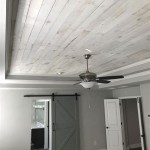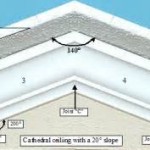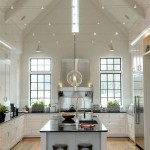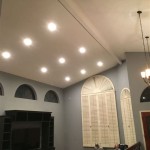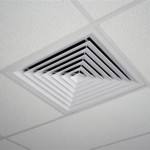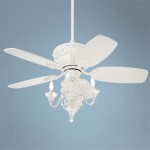Unique Ceiling Ideas To Transform Your Homes
The ceiling, often overlooked, represents a significant design element that can dramatically alter the aesthetic and ambiance of a home. While traditional ceilings are typically painted white and serve a purely functional purpose, exploring unique ceiling ideas can revitalize interior spaces, adding character, depth, and visual interest. This article explores various innovative ceiling designs suitable for different architectural styles and personal preferences, focusing on materials, techniques, and aesthetic considerations.
Textured Ceilings: Adding Depth and Dimension
Textured ceilings offer a versatile way to enhance a room's visual appeal. Instead of a flat, smooth surface, textured ceilings introduce patterns and irregularities that capture light and create shadows, adding depth and dimension. Several techniques can achieve this effect, each with its own unique characteristics.
Popcorn ceilings, a common choice in the past, have fallen out of favor due to their dated appearance and potential asbestos content. However, modern alternatives provide similar textural benefits without the associated drawbacks. Stipple ceilings, for example, offer a more refined and subtle texture, created by applying a thin layer of plaster with a stippling brush or roller.
Another approach involves using textured paint, which contains granules or aggregates that create a raised surface. This option allows for a wide range of patterns and finishes, from subtle sand textures to more pronounced stucco effects. Textured paint is relatively easy to apply and can be customized to match the existing décor.
Beyond paint and plaster, dimensional ceiling tiles offer a more modular and visually striking option. These tiles, typically made from materials like mineral fiber, PVC, or metal, feature raised patterns or geometric designs that create a three-dimensional effect. They are available in various styles, from classic coffered patterns to contemporary geometric shapes, and can be easily installed, making them a popular choice for DIY enthusiasts.
When considering textured ceilings, it is crucial to assess the room's overall style and lighting conditions. Bold textures work well in spacious rooms with ample natural light, while subtle textures are more suitable for smaller spaces or rooms with lower ceilings. Proper lighting is essential to accentuate the texture and prevent it from appearing heavy or overwhelming.
Tray Ceilings: Elevating Architectural Interest
Tray ceilings, also known as recessed ceilings, introduce an architectural element of sophistication. They consist of a central, recessed area that is higher than the surrounding ceiling surface, creating a visual "tray" effect. This design feature adds height and dimension to a room, making it feel more spacious and airy.
The simplest form of a tray ceiling involves a single recess, typically rectangular or oval in shape. This design is suitable for various architectural styles and can be easily integrated into existing rooms. More elaborate tray ceilings may incorporate multiple recesses, curved edges, or intricate molding details, adding a more dramatic and luxurious touch.
Lighting plays a crucial role in enhancing the visual impact of a tray ceiling. Recessed lighting fixtures, such as can lights or LED downlights, can be installed in the recessed area to provide ambient illumination and highlight the architectural details. Accent lighting, such as spotlights or track lighting, can be used to draw attention to specific features, such as artwork or architectural moldings.
Color is another important consideration when designing a tray ceiling. Painting the recessed area a lighter color than the surrounding ceiling surface can further enhance the sense of height and space. Alternatively, using a contrasting color can create a more dramatic and eye-catching effect. The color choice should complement the overall color scheme of the room and reflect the desired aesthetic.
Tray ceilings can also be customized with decorative elements, such as crown molding, coffered panels, or painted designs. Crown molding adds a touch of elegance and formality, while coffered panels create a more traditional and structured look. Painted designs, such as geometric patterns or trompe-l'oeil effects, can add a unique and artistic touch to the ceiling.
Material Innovations: Exploring Alternative Ceiling Finishes
Beyond traditional paint and plaster, a wide range of alternative materials can be used to create unique and visually stunning ceilings. These materials offer different textures, colors, and aesthetic qualities, allowing for greater design flexibility.
Wood is a popular choice for creating warm and inviting ceilings. Wood planks, panels, or beams can be used to create a rustic, contemporary, or traditional look. Reclaimed wood adds a touch of character and sustainability, while smooth, finished wood creates a more refined and elegant aesthetic. Wood ceilings can be stained, painted, or left natural to showcase the wood's natural grain and texture.
Metal ceilings offer a sleek and modern alternative to traditional materials. Metal panels, tiles, or sheets can be used to create a visually striking and durable ceiling finish. Metal ceilings are available in various finishes, including brushed aluminum, stainless steel, copper, and brass, each with its own unique aesthetic appeal. Perforated metal panels can also be used to improve acoustics and create a contemporary industrial look.
Fabric ceilings are a softer and more textured alternative to traditional materials. Fabric panels can be stretched across a frame or attached directly to the ceiling surface, creating a seamless and visually appealing finish. Fabric ceilings are available in various colors, patterns, and textures, allowing for a wide range of design possibilities. They can also improve acoustics and add a touch of warmth and comfort to a room.
Glass ceilings, or skylights, introduce natural light and create a sense of openness and connection to the outdoors. Skylights can be fixed or operable, allowing for ventilation and temperature control. They are available in various shapes and sizes and can be integrated into existing roofs or incorporated into new construction. Glass ceilings can also be used to create dramatic visual effects, such as reflecting light and creating patterns on the walls and floor.
When selecting alternative ceiling materials, it is important to consider factors such as cost, durability, maintenance requirements, and fire resistance. Some materials may require professional installation, while others can be installed by skilled DIYers. It is also important to ensure that the chosen material is compatible with the existing structure and climate conditions. Proper ventilation and insulation are essential to prevent moisture buildup and maintain a comfortable indoor environment.
Suspended Ceilings: Functionality and Aesthetics Combined
Suspended ceilings, also known as drop ceilings, are a practical and versatile option for concealing unsightly elements such as ductwork, pipes, and wiring. They consist of a grid of metal channels suspended from the existing ceiling, with lightweight panels or tiles inserted into the grid. While primarily functional, suspended ceilings can be aesthetically pleasing and offer various design possibilities.
Traditional suspended ceiling panels are typically made from mineral fiber or fiberglass, providing sound absorption and fire resistance. These panels are available in various textures and colors, allowing for some degree of customization. However, more modern and innovative suspended ceiling panels offer a wider range of aesthetic options.
Acoustic ceiling tiles are designed to improve sound quality and reduce noise levels in a room. These tiles are typically made from materials with high sound absorption coefficients, such as fiberglass, mineral fiber, or recycled materials. They are available in various shapes, sizes, and colors, allowing for both functional and aesthetic improvements.
Decorative ceiling tiles offer a more visually appealing alternative to traditional suspended ceiling panels. These tiles are available in various materials, including metal, wood, and PVC, and feature raised patterns, geometric designs, or embossed textures. They can be used to create a more sophisticated and stylish look, transforming a functional ceiling into a design feature.
Integrated lighting systems can be incorporated into suspended ceilings, providing a seamless and energy-efficient lighting solution. LED panels, recessed lights, or linear lighting fixtures can be installed within the grid, creating a uniform and well-lit space. Integrated lighting systems can also be controlled with dimmers or sensors, allowing for greater flexibility and energy savings.
When installing a suspended ceiling, it is important to ensure that the grid is properly aligned and leveled. The panels or tiles should fit snugly into the grid, creating a seamless and professional finish. Proper ventilation and access to concealed utilities are essential for maintaining the functionality and longevity of the suspended ceiling. Access panels can be installed to allow for easy maintenance and repairs.
Painted Ceilings: A Simple Yet Effective Transformation
Painting the ceiling is one of the simplest and most cost-effective ways to refresh a room and add visual interest. While white ceilings are a common choice, exploring alternative colors and finishes can dramatically transform the space. The color of the ceiling can influence the perceived size and height of the room, as well as the overall mood and atmosphere.
Lighter colors, such as pastel shades or off-white tones, can make a room feel more spacious and airy. These colors reflect light, brightening the space and creating a sense of openness. Light colors are particularly effective in rooms with low ceilings or limited natural light.
Darker colors, such as deep blues, grays, or blacks, can create a more intimate and cozy atmosphere. These colors absorb light, making the room feel smaller and more enclosed. Dark colors are best suited for rooms with high ceilings or ample natural light, as they can make the space feel overwhelming if used in smaller or darker rooms.
Color can be used to create visual illusions and correct architectural imperfections. Painting the ceiling a darker color than the walls can make a high ceiling appear lower, while painting the ceiling the same color as the walls can create a seamless and unified look. Painting a border or stripe around the perimeter of the ceiling can add visual interest and define the space.
Beyond color, the finish of the paint can also affect the overall look and feel of the ceiling. Flat or matte finishes are best for concealing imperfections and creating a smooth, uniform surface. Semi-gloss or gloss finishes reflect more light and are easier to clean, making them suitable for kitchens and bathrooms. Textured paint finishes can add depth and dimension to the ceiling, creating a more visually interesting surface.
When painting a ceiling, it is important to prepare the surface properly by cleaning it thoroughly and repairing any cracks or imperfections. Use a high-quality paint that is specifically designed for ceilings, and apply it evenly using a roller or brush. Proper ventilation is essential to prevent fumes from building up and ensure that the paint dries properly.

37 Living Room Ceiling Ideas To Transform Your Home

Can Decorating Your Ceiling Transform Home Amin Mohammad Foundation

7 Simple Ceiling Designs To Transform Your Halls
7 Best Ceiling Design Decor Ideas For Living Rooms Bedrooms By Shruti Sodhi Medium

Creative Ceiling Design Ideas Transform Your Room From The Top Down Decorilla Interior

9 Ceiling Design Ideas Home Texture
.jpg?strip=all)
20 False Ceiling Design Ideas To Transform Your Home Decor

7 Simple Ceiling Designs To Transform Your Halls

Ceiling Design Ideas To Transform Your Home Buildi

7 Living Room Shiplap Ceiling Ideas For Every Style
Related Posts


